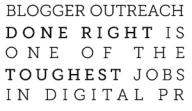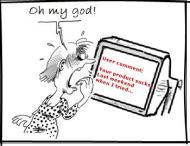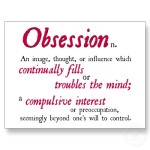
As the year draws close to closing, in our minds we prepare for what the new year will bring, and given this, I thought it opportune to share what the futurists are predicting as the big new trends in consumer behaviour for our immediate future.
A report released by EuroMonitor has revealed their picks for the top 10 trends that will emerge over the next five years, and their list makes for fascinating reading.
Top 10 Trends For the Next Five Years:
1. The search for value: One of the key outcomes of the recession was that consumers reigned in spending and became much more cautious about how, when and where they shopped. With recovery slow and employment high, this thrifty mindset looks set to continue over the next five years.
2. A more cautious approach to credit: Since the start of the recession, consumers in developed markets have prioritised the need to live within their means and have tended to acquire new credit only for larger, specific purchases.
3. People power: In a new age of cautiousness and considered purchasing, consumers no longer take marketing at face value. Individuals are taking it upon themselves to carry out their own research, make their opinions known and take a more active role in product development and promotion.
4. Multicultural consumerism: Societies are becoming more multicultural as developed markets see an influx of migrant workers and foreign students, while existing ethnic populations expand. In the US, babies born to minority groups represented a majority of all births for the first time in 2012.
5. The fight against obesity: Despite the growing trend towards health and wellness, obesity rates have reached record levels and continue to grow, albeit more slowly than before. According to the World Health Organization (WHO), obesity rates have doubled since 1980.
6. New attitudes towards growing old: As populations have aged and society has become more liberal, attitudes towards youth, middle- and old-age have changed markedly, blurring the traditionally-perceived boundaries of age-appropriate fashion and lifestyles.
7. Experience-based consumption: Since the start of recession, consumers in developed markets have focused less on conspicuous consumption and the gain of material possessions, and more on seeking out mood-boosting or even life-changing experiences.
8. The rise in social responsibility: Despite consumers having become more value-conscious since the start of the recession, there are also signs that many have become more compassionate and socially responsible.
9. The chemical backlash: As consumers worry increasingly about their health and wellness and the effects of potentially harmful chemicals found in everyday products, demand for natural ingredients in everything from packaged food to toiletries continues to grow.
10. Mobile cocooning: Consumers worldwide are becoming addicted to smart devices such as mobile phones and tablet computers as they are able to fulfill an ever growing multitude of tasks anywhere and at any time, from shopping, entertaining and networking to banking, education and GPS.
How do you feel about these trend predictions? In my own business and from personal experience I can verify the push towards creating ‘stories’, adding ‘value’, making personal connections through content, and the push towards mobile everything – news, travel, commerce, sales. As a society, and as business cultures, we are becoming more agile, more value-oriented, more cynical, searching for meaning, and looking for authentic experiences, and this is as true in PR as in any other industry.
How do we translate these general trends into how our consumers research, plan and buy what we have to sell? That is our challenge for 2013.
Are these new trends already affecting your business? Write and let me know!

Yours in PR
 We’ve been asked to write a media and PR book by one of Australia’s leading publishers, for business owners and managers that want to grow their companies’ brands and bottom-lines.
We’ve been asked to write a media and PR book by one of Australia’s leading publishers, for business owners and managers that want to grow their companies’ brands and bottom-lines.




 ow to safeguard your (and your company’s) reputation in the online community
ow to safeguard your (and your company’s) reputation in the online community





